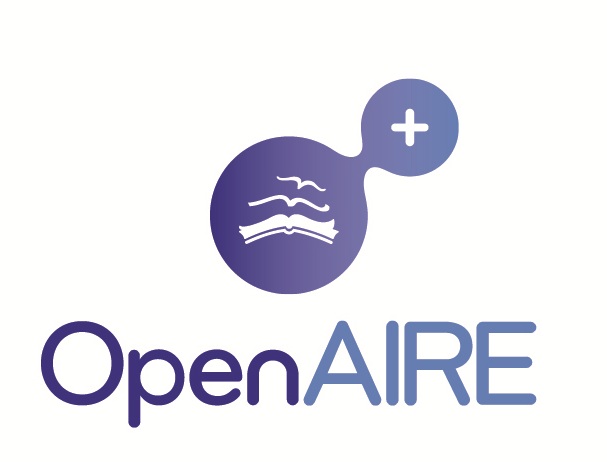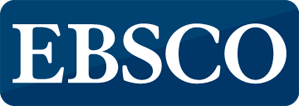2018
Vol 16, No 1 (2018): March

Foreword about Professor Pavol Spanik chairman of the International Scientific Editorial Board of "Advances in Electrical and Electronic Engineering" journal and the Dean Faculty of the Electrical Engineering, University of Zilina and the Professor at Department of Power Electrical Systems, Faculty of Electrical Engineering, University of Zilina:
"Dear readers,
I have the honor to address you as a chairman of the journal Advances in Electrical and Electronic Engineering, which has ranked among the relevant journals in the mentioned research area over the past period. I would like to thank my colleagues from the Faculty of Electrical Engineering and Computer Science VSB–Technical University of Ostrava for the offer of this function, which I want to carry out for the development of this journal and further increase of its importance for the scientific community. The Advances in Electrical and Electronic Engineering journal has become over the past period a respected and recognized indexed periodical, representing a significant information source for scientists in the field of electrical engineering, electronics, information and communication technologies, applied informatics and biomedicine. Allow me to highly appreciate the great work of colleagues from the Faculty of Electrical Engineering and Computer Science VSB–Technical University of Ostrava, who has greatly increased the importance of the journal and its scientometric parameters."
2017
Vol 15, No 5 (2017): December

Foreword about Professor Raj Senani from the Division of Electronics and Communication Engineering, Netaji Subhas Institute of Technology, Dwarka, New Delhi, Dalibor Biolek a member of the International Scientific Editorial Board of "Advances in Electrical and Electronic Engineering" journal and the Professor at University of Defence and Brno University of Technology, and Professor Data Ram Bhaskar from the Department of Electronics & Communication Engineering at Delhi Technological University, India:
"Dear readers,
The Advances in Electrical and Electronic Engineering (AEEE) journal publishes papers from a research area that has for some time been experiencing its golden age: The original concept of electrical engineering and electronics is going to be more closely associated with the materials science, physics, chemistry, and also progressive directions of signal processing in order to solve, from the multidisciplinary point of view, up-to-date problems of the semiconductor and computer industries, nanoelectronics, but also bio-inspired electronics and telecommunication systems utilizing recent results in the theory of chaos, Cellular Neural Networks (CNN), and Cellular Automata (CA). The theoretical foundations of this modern process have their roots in the nineteen seventies and eighties when the ideas of the memristor, Chua’s circuits, periodical table of fundamental electrical elements, Integral Manifold, Double Scroll, and CNN came to light.
Currently, the progressive concepts of The edge of chaos and The principle of Local Activity are the origin of all nonlinear phenomena published in the literature under the generic title complexity. They will become increasingly important as researchers learn to apply them to real-world problems, inclusive of explaining such extreme events as hurricanes, earthquakes, tsunamis, stock market crashes, etc. Since 2002, these genuine pearls of the theory of nonlinear dynamical systems have gradually been linked with Wolfram’s new kind of science in order to complete it with a rigorous mathematical background. Such a beautiful cross-fade of science, art, and creativity has also its tangible results- new kinds of cellular automata, revolutionary computer memories, CNNs for real-time solutions of extremely complicated problems, etc."
Vol 15, No 4 (2017): Special Issue
Knowledge in Telecommunication Technologies and Optics 2017

Foreword about Mauro Tropea, Research Fellow, DIMES Department of University of Calabria, Italy:
"Dear Readers,
I am grateful for the opportunity to write a foreword for this edition of Advances in Electrical and Electronic Engineering (AEEE). I collaborate from many years with the telecommunication group of the D.I.M.E.S department of the University of Calabria in Arcavacata of Rende, Italy. In all these years I have spent a lot of my time in studying and analysing issues in telecommunication systems in order to give a modest contribute to different telecommunication sectors. The last few years have been characterised of enormous improvements both in devices and in computer engineering services. Electrical and electronic engineering has been privileged as a priority for infrastructure development, making this journal issue timely and important and it has been planned to collect some specific paper contributions, reflecting the state of the art and the technological proposals expected to play key roles in the journal focus areas. This journal is dedicated to the publication of new theoretical and experimental results in all areas of interests. In particular, in this edition many papers on “networks, modelling and QoS” and “IoT, simulation and data processing” have been submitted, given the increasing interest in these years for these topics in the all world research. So, it is easy to understand how the AEEE journal facilitates contacts between research centers and industry (or market), offering the opportunity to deep the knowledge of the industrial communities, through the publication of high quality scientific and professional papers, which may be presented by experienced authors or post graduate students/researchers and standards. In addition, application papers of particular interest to industry, as well as contributions containing novel ideas, are strongly encouraged."
Vol 15, No 3 (2017): September
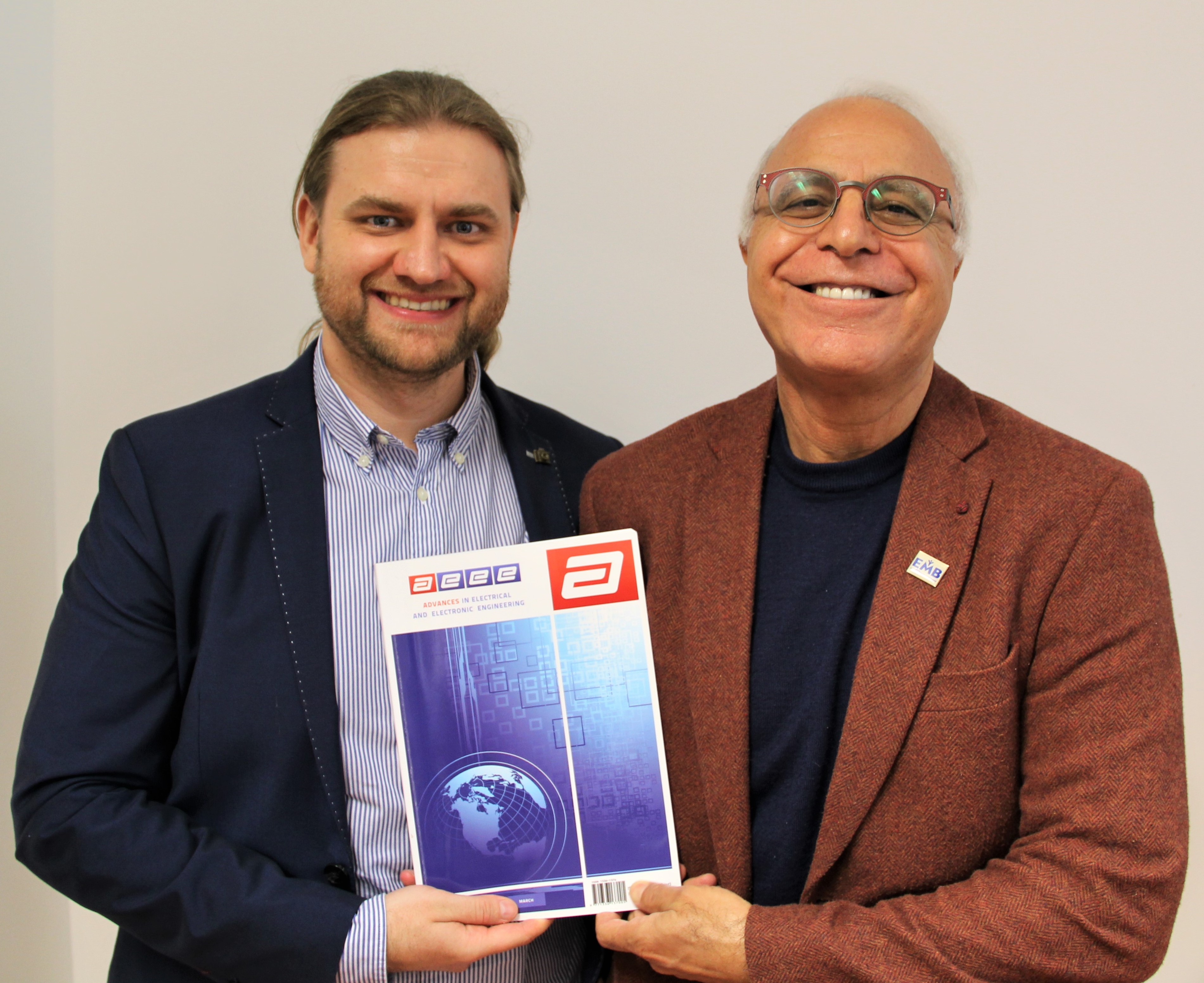
Foreword about Professor Homer Nazeran, a Senior Member of the IEEE and a faculty with the Department of Electrical and Computer Engineering at the University of Texas at El Paso, and Associate Professor Radek Martinek, the Editor-in-Chief of the “Advances in Electrical and Electronic Engineering” Journal, and a faculty of the Department of Cybernetics and Biomedical Engineering, Faculty of Electrical Engineering and Computer Science, VSB-Technical University of Ostrava:
"Dear Readers, International collaboration is a key ingredient to success because it leverages strong elements of diversity and richness in multidisciplinary Scientific and Engineering research in today’s global climate. Therefore, Dr. Martinek and I found it very timely to write this Foreword together. The idea of creating the Special Issue of the AEEE Journal dedicated to “The Application of Advanced Signal Processing Techniques” was first formulated last year. At that time, we had no clue that Associate Professor Martinek would become the Editor-in-Chief of this journal or that Professor Nazeran would visit the VSB-Technical University of Ostrava in the Czech Republic as part of “The Internationalization Program” and a sabbatical opportunity from UTEP in the fall of 2017. Now, at the time of publishing this Special Issue, we share the same office and enjoy daily face-to-face discussions in exchanging research, scholarship and teaching ideas. We consider this a unique opportunity and a great privilege not only to disseminate the research findings of different scholars from around the world, but to share some of the results of our collaboration, as briefly we reflect on the future directions in Advanced Signal Processing Techniques in various application areas."
Vol 15, No 2 (2017): June
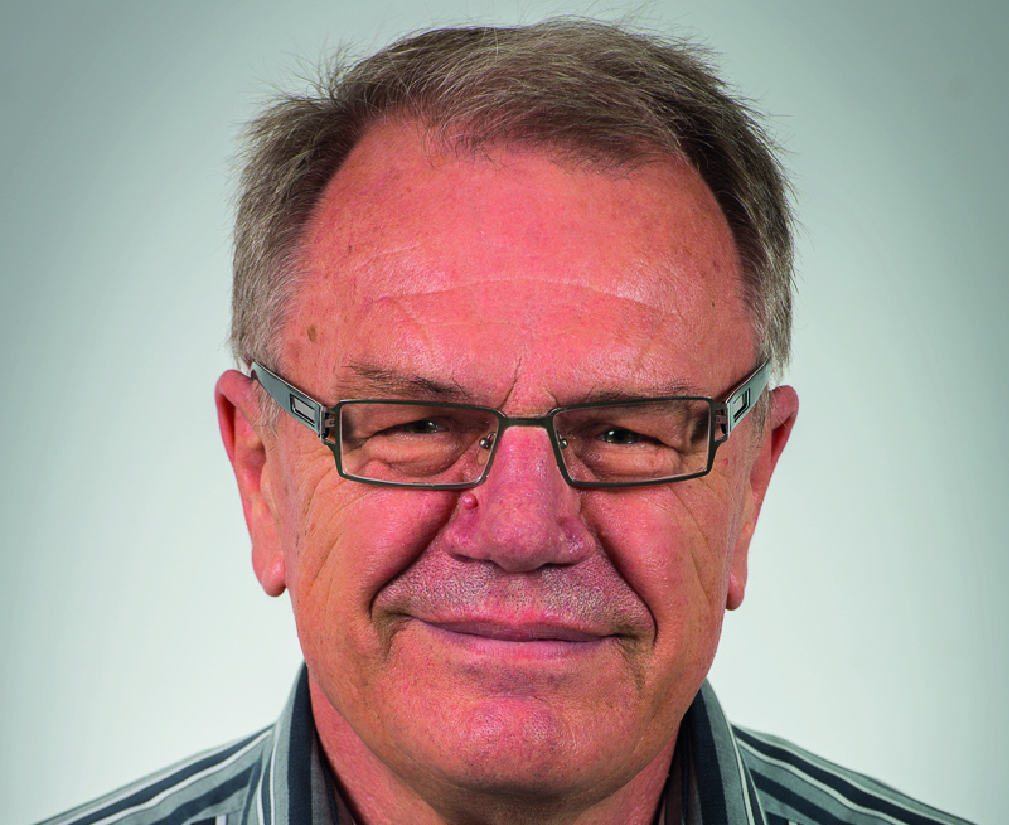
Foreword about Zdenek Dostal, Professor at VSB–Technical University of Ostrava, Faculty of Electrical Engineering and Computer Science, Department of Applied Mathematics:
"Dear Readers, I am happy to have an opportunity to write a foreword to this edition of Advances in Electrical and Electronic Engineering with the papers of some of my colleagues from the Department of Applied Mathematics of Faculty of Electrical Engineering and Computer Science, VSB–Technical University of Ostrava and National Supercomputing Center. The collection includes the papers which illustrate the mathematical research of the above institutions. The papers are related not only to the fields of research which is well developed in both institutions, such as development of algorithms for the solution of the large problems arising in computational mechanics and electromagnetism, parallel algorithms, or new applications of boundary element method, but also to the fields that are new to both institutions, such as mathematical problems related to the modelling of electronic structures, problems described by stochastic partial differential equations, and inverse problems, local eigenvalue analysis with applications, or the analysis of dynamical systems. There are also papers on the application of recently developed methods to new problems, such as implementation of heterogeneous image registration by means of Total Finite Element Tearing and Interconnecting (TFETI) method or transient finite-boundary element simulation of electromagnetic forming of metal sheets, or papers on interesting mathematical problems motivated by the real world problems."
Vol 15, No 1 (2017): March

Foreword about Professor Maria Franekova, a member of the International Scientific Editorial Board of "Advances in Electrical and Electronic Engineering" journal and the Professor at University of Zilina, Faculty of Electrical Engineering, Department of Control and Information Systems:
"In the modern safety-related control and communication systems, it is possible to talk about the integration of „security” elements with the „safety” elements. From the scientific research point of view, it is a perspective field of cryptography and information and communication security (ICS) mechanisms in the applications with increased safety integrity level (SIL), requiring a transfer of knowledge from ICS to SR systems. This dynamically expanding area interferes to a large spectrum of process automation in the machine engineering, chemical engineering, transport and everywhere, where an undetected corruption of transmitted data can cause casualties, harms of human health, substantial material damages or environmental damages."
2016
Vol 14, No 5 (2016): December

Foreword about Sasa Mrdovic, Associate Professor, Computer Science Department, Faculty of Electrical Engineering, University of Sarajevo:
"KTTO has a good thing that it is organized at an isolated place. After formal presentation during day, it was very pleasant to have informal discussions with colleagues in the evening. Attendees spent most of the time together get to know each other and develop better relations. I consider social element to be very important for a conference. Organizers were very hospitable. The food and the beer were excellent. I would recommend everybody, interested in telecommunications, to take part in future KTTO conferences. "
Vol 14, No 4 (2016): Special Issue
Knowledge in Telecommunication Technologies and Optics 2016
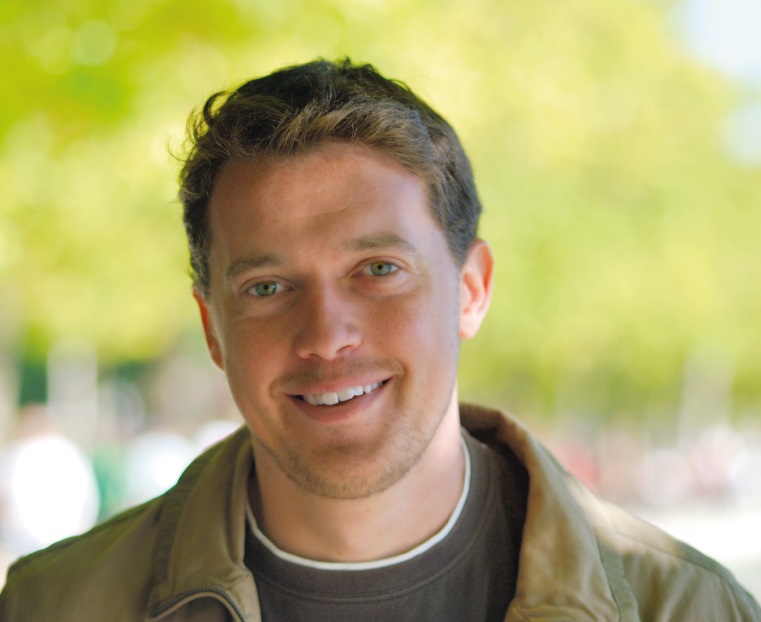
Foreword about Stefan Rass, Associate Professor, System Security Group, Institute of Applied Informatics, Alpen-Adria Universitat Klagenfurt, Austria:
"Dear readers,
it is a great pleasure for me to write a few words about the recent Knowledge in Telecommunication Technologies and Optics (KTTO) conference, which was held in the hotel KAM from the 5th until the 7th of September 2016, embedded in the scenic area near Beskydy mountains Malenovice, Czech Republic. Personally, I very much prefer smaller conferences over events that attempt to bring together hundreds of people, as it has been my experience that getting in touch with people is much easier in smaller groups. And indeed, the KTTO conference is a wonderful example of scientific work presented in a productive and friendly open-minded atmosphere, were people freely engage in discussions and mutual respect for the others work. This culminated in a series of highly interesting talks on quite a comprehensive range of topics, including (but not limited to) network technologies and simulation, radio networks, security, the internet of things, etc. I think this venue is an excellent opportunity for young scientists to put their work to discussion among a highly selected group of experts that really brings together input from practical as well as theoretical domains, to advance the knowledge and state of the art in the field.
To conclude, I would like to take the chance to express my greatest gratitude to the organizers of the conference for having put together an interesting program driven by interesting people in a wonderful environment and under a perfect organization. I wish the organizers all the best for the future, and a great deal of valuable research and high quality peer review(ed) articles being published in the Advances in Electrical and Electronic Engineering journal. The most interesting articles from KTTO 2016 are found hereafter, and I bet the choice among so many good candidates has not been easy. Enjoy reading!"
Vol 14, No 3 (2016): September
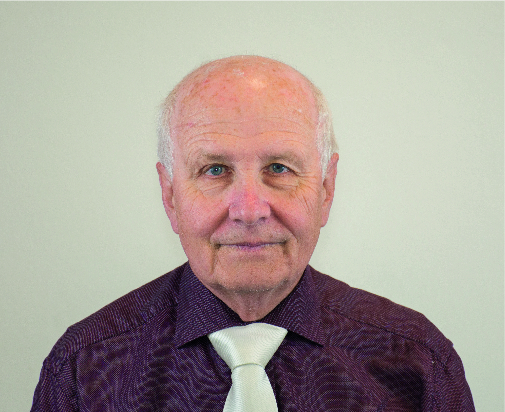
Foreword about Professor Vladimir Schejbal, a member of the International Scientific Editorial Board of "Advances in Electrical and Electronic Engineering" journal and the Professor at University of Pardubice, Jan Perner Transport Faculty, Department of Electrical and Electronic Engineering and Signaling in Transport:
"An exponential growth of production (2.5x1020 transistors produced in 2014) and extensive decrease of cost, dimensions and power consumption allow completely new approaches to development of very complicated prototypes of military radars as well as mass production of various very cheap car radars. That means not only to design simple components but to develop subsystems from the whole system point of view considering reasonable operation and complex circumstances. It is necessary to analyze electromagnetic and circuit devices using numerical simulations, novel measurement equipment and methods, innovative materials such as metamaterials, nanotechnology, antenna patterns, hybrid and digital beamforming, digital signal processing and latest possibilities of hardware and software."
Vol 14, No 2 (2016): June
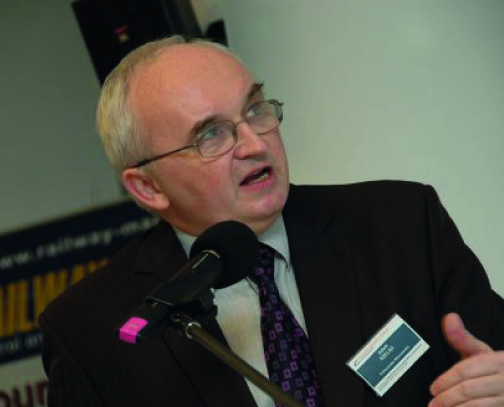
Foreword about Professor Adam Szelag, a member of the International Scientific Editorial Board of "Advances in Electrical and Electronic Engineering" journal and the Professor at Warsaw University of Technology, Faculty of Electrical Engineering, Electric Traction Division:
"The strategic role of electric traction in the countries that do not have their own resources of liquid fuels stems from electric transport capability of providing means necessary for economy, even in the absence of liquid fuel supply (electricity can be generated from other sources, including renewable ones). Hence, it is extremely important to expand properly the existing electric transport networks and develop new ones in the areas, where it can compete effectively with other transport means, i.e. in the cities and on high speed rail lines. One should not forget how important it is to employ state-of-the-art technologies and solutions posing a major challenge for development of science, innovation, but also for the environmental aspects of transport, which on the other hand enables utilisation of EU funds in expansion of electric traction."
Vol 14, No 1 (2016): March
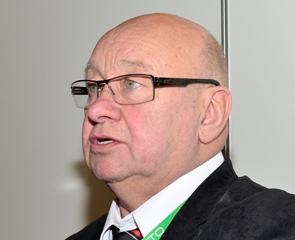
Foreword about Professor Jerzy Mikulski, a member of the International Scientific Editorial Board of „Advances in Electrical and Electronic Engineering” journal and at the same time the President of the Polish Association of Transport Telematics and also a staff member of the Transport Department, University of Economics in Katowice, Poland:
"Dear Readers, I have been cooperating with the journal "Advances in Electrical and Electronic Engineering" for years, and it all started due to my long-standing contacts with Czech and Slovak universities. All the time the magazine "holds" high academic standards and I read articles published there always with a great interest. In conclusion, I congratulate the editors and I encourage anyone interested in publishing their research results to submit them to the magazine."
2015
Vol 13, No 5 (2015): December
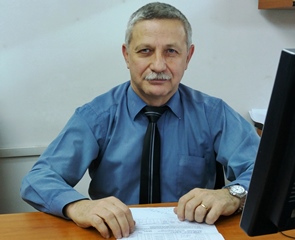
Foreword about Gheorghe Sebestyen-Pal, professor at the Technical University of Cluj-Napoca (TUCN), vice-dean of the Faculty of Automation and Computers, Romania:
"As part of the predictability and dependability problem a challenging sub-domain is that of real-time computing. The goal is to develop real-time scheduling strategies and algorithms, which can guarantee that all the tasks of a complex application will finish their execution before their imposed deadlines. Software parts must synchronize with mechanical or electrical parts and computing tasks must be correlated with communication protocols in order to fulfill some global real-time restrictions. "
Vol 13, No 4 (2015): Special Issue
Knowledge in Telecommunication Technologies and Optics 2015
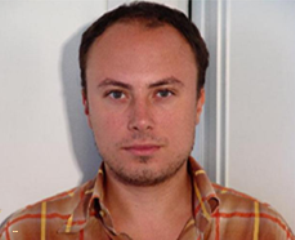
Foreword about Floriano De Rango, Assistant Professor, member of Department of Informatics, Modeling, Electronic and Systems (DIMES), University of Calabria, Italy:
" In the edition of 2015 I gave a talk on Scalable Strategies to adopt in the design of MAC layer, routing protocols or localization techniques applied in distributed wireless systems such as Mobile Ad Hoc Networks (MANET) and Wireless Sensor Networks (WSN). Scalability is becoming a crucial point in the protocol design, especially if we think of the new generation of smart objects and smart machines that will interact with them (M2M) or with humans. The Internet of Things area will establish the new ways to design network protocols and to offer increase in scalability in terms of traffic, nodes, and mobility."
Vol 13, No 3 (2015): September
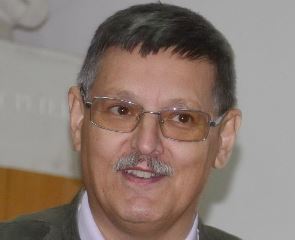
Foreword about Lorand Szabo, member of the Department of Electrical Machines and Drives at the Faculty of Electrical Engineering, Technical University of Cluj, Romania:
"Dear Readers, My first contact with Advances in Electrical and Electronic Engineering was in 2004 after my earliest participation in the ELEKTRO Conference organised in High Tatras. This was an excellent opportunity for me to get in a first contact with several researchers from the Czech Republic and Slovak Republic. Our three papers presented at the Conference were published in Advances in Electrical and Electronic Engineering. At that time I was surprised about the excellent quality both of the papers and the printed journal. For several years these papers were the flagships of my publication list and I became a fan of the journal. Therefore it was a special honour for me that I was selected to be Member of the Editorial Board among several well-known researchers in Electrical and Electronic Engineering."
Vol 13, No 2 (2015): June
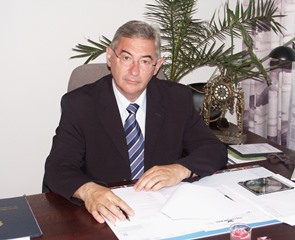
Foreword about Miroslaw Luft, Head of the Department of Automatic Control and Measurement Engineering at the Faculty of Transport and Electrical Engineering, Kazimierz Pulaski University of Technology and Humanities in Radom, Poland:
"I will continue research work in the field of automation: extend applicability of the on-line correction algorithms to vibration measurements; on-line automatic measurements and diagnostics of railway transport means and traffic safety in transport systems."
Vol 13, No 1 (2015): March

Foreword about Professor Yuriy S. Shmaliy, IEEE Fellow, Head of Electronics Engineering Department, Universidad de Guanajuato, Mexico:
"One of the most interesting applications for UFIR filtering is networking and localization. Here, the target (vehicle, robot, ship, aircraft, etc.) noise is often not precisely known and the surrounding implies uncertainties both in the behavior and in the measurement. Under such conditions, the Kalman filter often produces unacceptable errors. Thus, better robustness of the iterative UFIR estimator ignoring noise may be crucial to achieve highest accuracy and precision."
2014
Vol 12, No 6 (2014): Special Issue
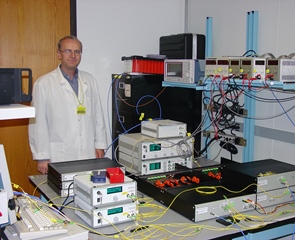
Foreword about Ivan Glesk, Professor, member of the Department of Electronic and Electrical Engineering, Faculty of Engineering, University of Strathclyde, United Kingdom:
"We are fortunate to be an integral part of the very exciting period in the human history. The world we live in is changing in front of our eyes so quickly and so dramatically that it seems we often have a hard time not to only follow these changes but often to even notice them. Only few years ago words like cloud computing, petaflop computer, silicon photonics or exabytes of data were not needed to be part of the young generation vocabulary. However with more such changes coming we need to be proactive to succeed. All, the researchers, the educators and the society as the whole must be willing and be ready to invest through the highest quality education and forward looking research whatever it is necessary to unlock the secrets to secure technological innovations we will needed so the future will bring even more excitements than we are enjoying right now."
Vol 12, No 5 (2014): December

Foreword about Sergey Vladimirovich Serebriannikov, member of the Department of Physics and Technology of Electrotechnical Materials and Components, National Research University, Russian Federation:
"In recent years the laboratory of our department was replenished with devices and apparatuses, which allowed performing research not only in the Russian standards, but also in the European standards, recommendations of IEC and ASTM. The most interesting areas of modern works are studying of opportunities to increase working temperatures of insulation of electrical machines, especially generators and traction engines. For this purpose various compositions are made and it is necessary to study processes of heat transfer in these compositions."
Vol 12, No 4 (2014): Special Issue
Knowledge in Telecommunication Technologies and Optics 2014

Foreword about Victor Rangel-Licea, Professor, member of the Department of Telecommunications, Faculty of Engineering, National Autonomous University of Mexico (UNAM):
"As it is showed in my latest book on the field of Broadband Wireless Access networks based on LTE and LTE-Advanced, the major challenges are towards improvements at lower layers. Specifically, numerous changes in the PHY layer and the RRC/RLC/MAC sub layers can be expected to support larger data rates with more flexible allocations, using further antenna technologies, coordinated base stations, enhanced scheduling algorithms, interference management, relays, 8x8 MIMO technology and the latest but not least, massive MIMO."
Vol 12, No 3 (2014): September
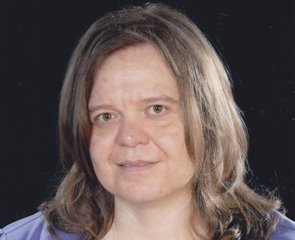
Foreword about Marie Richterova, member of the Department of Communication and Information Systems,University of Defence, Czech Republic:
"The transmission modulated signals by the radio channel brings many important problems. Methods and techniques of the modulation recognition allow effective monitoring of radio equipments to detect possible interference from other radio sources. The modulation recognition increases the reliability of communication systems to ensure the electromagnetic compatibility of radio communications."
Vol 12, No 2 (2014): June
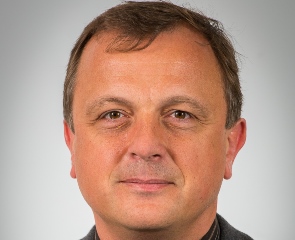
Foreword about Radek Kucera, head of the Department of Mathematics and Descriptive Geometry, VSB-Technical University of Ostrava, Czech Republic:
"The mathematical modelling including numerical methods of linear algebra and optimization is an attractive scientific field from the point of view of engineering applications. Many important industry problems, problems in biology, chemistry, medicine, economy or ecology can be effectively modelled and solved numerically. Another impulse for research in this area is the emergence of new computer architectures and growth of capabilities of computers itself. These two aspects – practical problems and new computational tools – guaranty necessity to develop new mathematical models and numerical methods in the future."
Vol 12, No 1 (2014): March
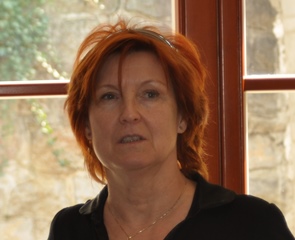
Foreword about Eva Gescheidtova, Professor, Department of Theoretical and Experimental Electrical Engineering, Brno University of Technology, Czech Republic:
"Two major trends can be identified in NMR-based imaging techniques; the first of these approaches leads towards further development of NMR devices and comprises a continuous increase of their structural quality, mainly within the generation and measurement of magnetic field. The time characteristics of magnetic field gradients are measured with various MR methods, and all the techniques have been used to precisely set the pre-emphasis compensation in MR tomography systems. Another significant factor in the above-outlined overall quality improvement is the effort to achieve and maintain a high homogeneity of the basic magnetic field and to eliminate the influence of the susceptibility of materials located within the operating area of the device."
2013
Vol 11, No 6 (2013): December
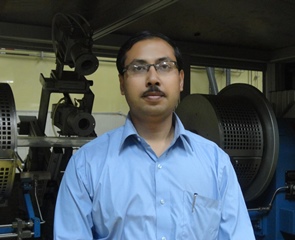
Foreword about Dr. Anirban Dhar, Scientist of Fiber Optics & Photonics Division, CSIR-Central Glass & Ceramic Research Institute, Kolkata, India:
"In my opinion, focus of present telecommunication research is towards the development of multi-mode specialty fibers targeting the fears of future “capacity-crunch” by implementing the principle of Mode Division Multiplexing (MDM). Already some remarkable progress has been achieved in this field by different groups through precise waveguide design and fabrication of few mode fibers but further improvements are inevitable to achieve ambitious target of enhancing internet speed by 100X. On the other hand, in terms of high power Yb-doped laser fiber which has already achieved multi-kilowatt power level, further power enhancement requires continuous research involvement to avoid “photodarkening” phenomena that result increased attenuation in the doped core of the fibre when pumped at Yb-bands (915–976 nm) or even in the visible wavelength."
Vol 11, No 5 (2013): Special Issue
Knowledge in Telecommunication Technologies and Optics 2013

Foreword about Ray-Guang Cheng, Professor, Department of Electronic and Computer Engineering, National Taiwan University of Science and Technology:
"I was lucky to involve in projects for deploying GSM networks in Taiwan, designing GPRS and UMTS air interface protocols, and participating in 3GPP and IEEE standard meetings. The combination of theory and practice in the form of product-driven projects has always brought us new challenges forced us to expand our knowledge, and taught us to think from the whole system point of view. The next generation mobile communication systems are expected to utilize single and unified air-Interface to offer high-speed data transmission for massive connectivity."
Vol 11, No 4 (2013): September
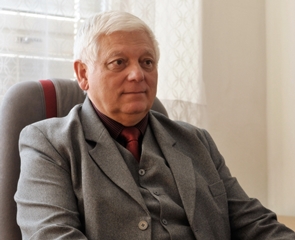
Foreword about Jan Kohout, head of the Department of Mathematics and Physics and the vice-dean for research at the Faculty of Military Technology, University of Defence in Brno:
"All the research and development was concentrated to obtain better and better materials and to design the devices with higher power, efficiency, lifetime, reliability and with lower mass, price, operating and maintenance costs. Deep study between structure and properties led to hi-tech and advanced materials with not only improved properties, but with properties made to measure. Further development including nanotechnology leads to materials with unforeseen properties as well as with fully new fields of applications, last but not least in microelectronics."










